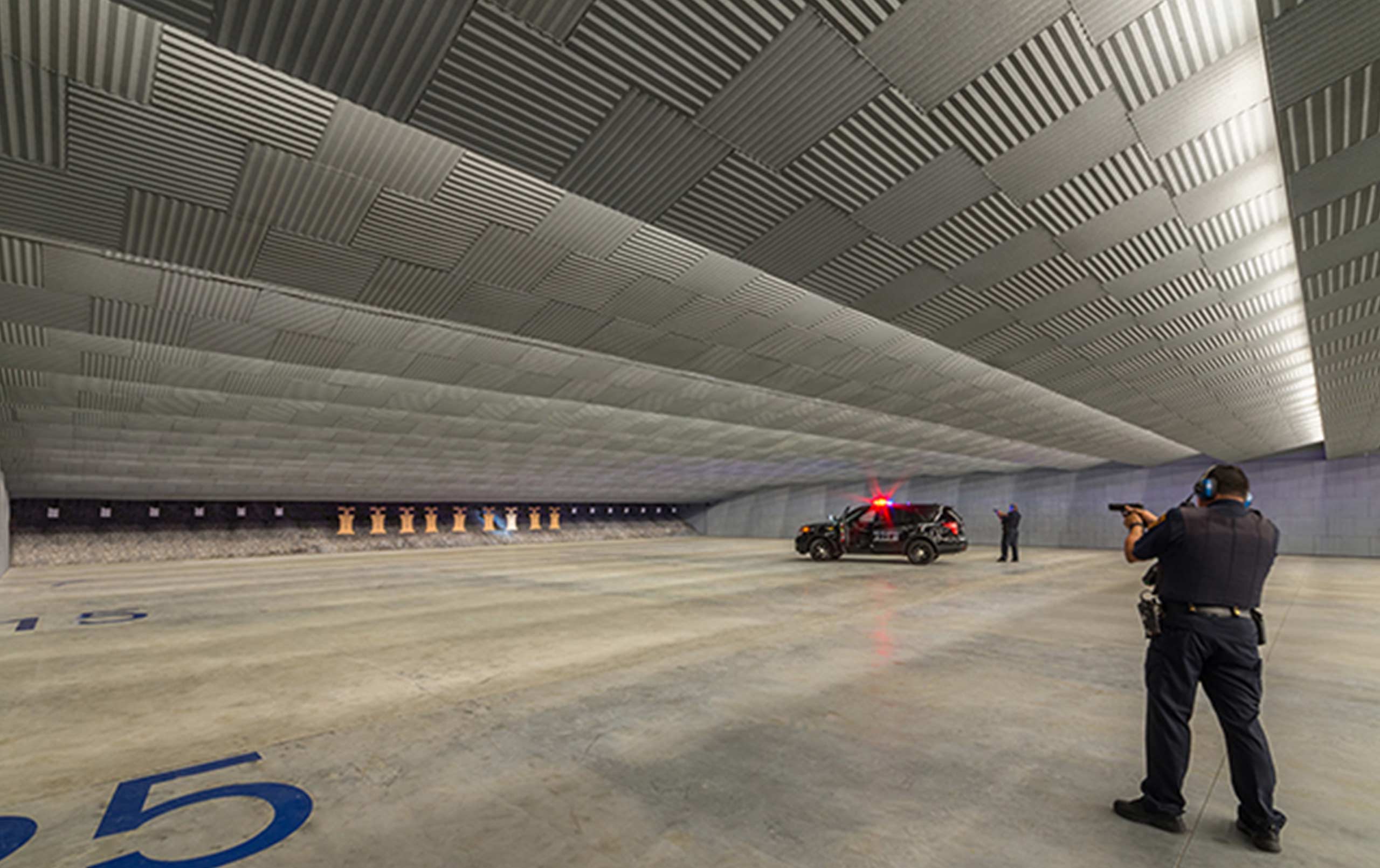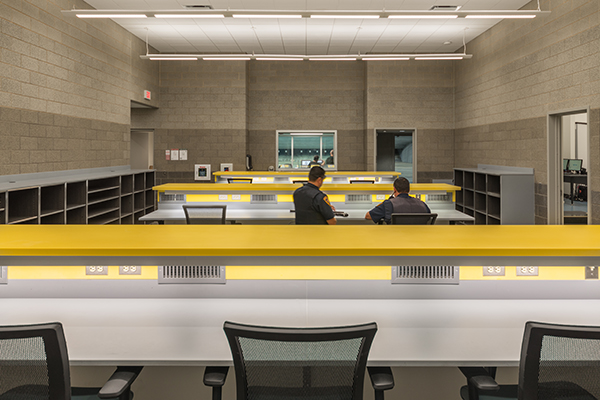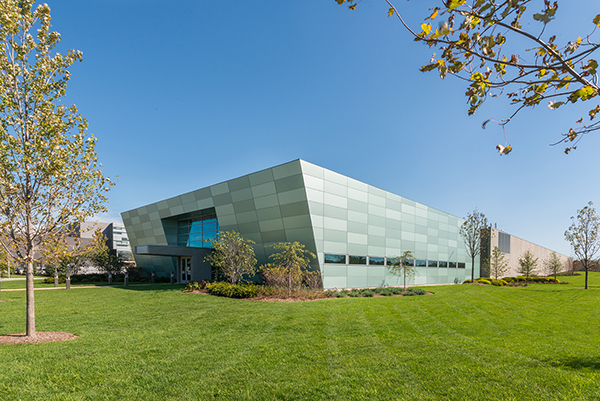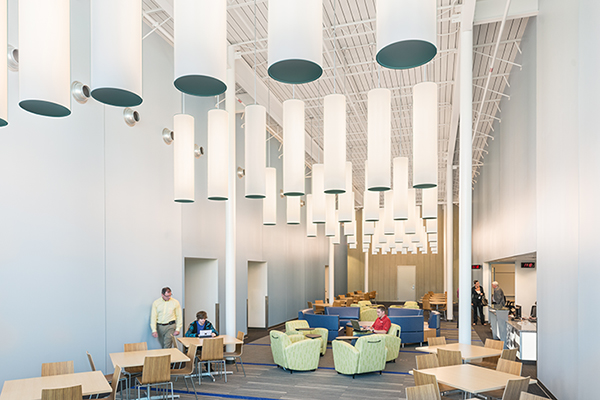
Airtightness, optimized energy performance prove critical in first responder training facility’s sustainable accomplishment
[Glen Ellyn, IL] – The College of DuPage’s Homeland Security Training Center (HTC) has several spaces that you are unlikely to encounter at any other college or university.
One of them is an interior firing range. Even though law enforcement personnel use frangible (i.e., non-lead) bullets within that range, other contaminants released into the air upon discharge proved to be a hurdle to the college’s goal of achieving an energy-efficient facility.
Despite this obstacle, the facility, designed by Legat Architects and built by Power Construction, was equipped with an advanced airtight system that played a key role in the HTC’s recent LEED certification from the US Green Building Council. The certification recognizes resource-efficient buildings that “use less water and energy and reduce greenhouse gas emissions. As a bonus, they save money.”

Advanced Barrier Creates Cleaner Air, Cost Savings
“It’s difficult to make a building energy efficient when five-eighths of it is a shooting range,” said Legat’s Jay Johnson, project manager for the HTC, as well as the adjacent Homeland Security Education Center (also LEED certified).
Johnson and his team specified Dow Building Solutions’ LIQUIDARMORTM, a liquid spray that self-seals all building envelope joints and penetrations instead of a traditional self-sticking tape system. The result is a building envelope that is airtight and water vapor tight.
Once the system was installed, Oak Ridge National Lab did a “Whole Building Blow Door Test,” which measures the system’s air sealing and insulation performance compared to that of conventional commercial construction.
Dr. Diana Hun, building envelopes researcher at the organization, said, “With proper selection and installation of air barrier materials, the Homeland Security Training Center was able to attain an air leakage rate that is 63% lower than what is specified in the 2015 International Energy Conservation Code.”
In other words, the HTC is 83% more airtight than the average commercial building without an air barrier. Simulations showed that this discrepancy in airtightness could save the college about $3,000 a year in HVAC costs.

Metal Panels Bring Resource Efficiency
As people approach the HTC, one of the first things that they notice is the vibrant green of its wall panels. The Aluminum Composite Material (ACM) metal panel system allowed for a more efficient building process. The panels clad a well-insulated wall system, while their aluminum creates a hard, smooth surface for a contemporary look.
Matt Scott, sustainability coordinator at Legat, said, “The composite aluminum has a great strength-to-weight ratio so that the structure and foundations can be smaller. That reduces the amount of material needed for construction.”

Following are examples of the facility’s additional sustainable applications:
- Furniture contains a high level of recycled content.
- Energy-efficient LED lighting throughout the facility.
- 45% of project materials were extracted and manufactured regionally.
- Two electric car charging stations can charge up to four cars at once.
- A white TPO roof reflects heat and reduces building energy use.
- Low-flow fixtures and water-saving appliances reduce water use by 39% compared to a similar building designed to meet code minimums.
- Low-emitting (Low-E) adhesives, sealants, paints, and flooring systems maximize indoor air quality.
- Occupancy sensors automatically turn off lights when rooms are unoccupied.
View more images of the Homeland Security Training Center.
Contact us to learn more about sustainability or higher education design, or comment below to share your thoughts on this post.


